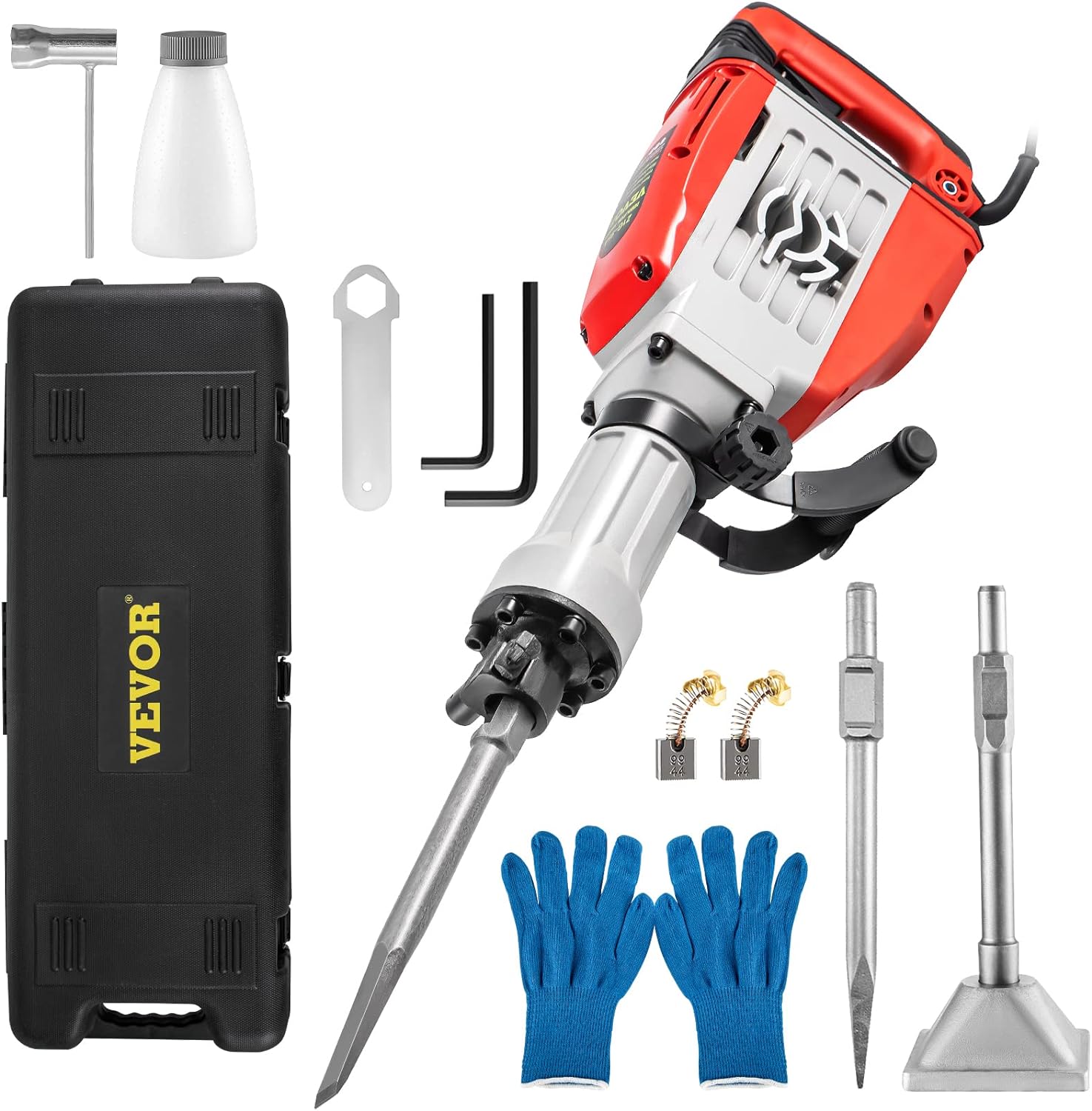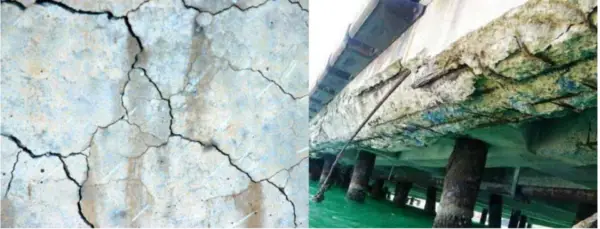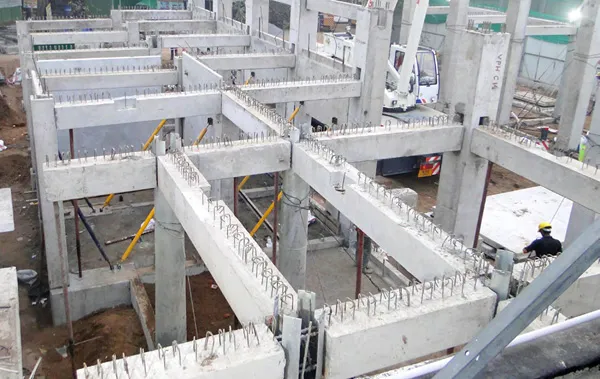As infrastructure and buildings age, concrete demolition becomes necessary before new construction can begin.
Specialized tools and controlled techniques allow concrete to be broken up and hauled away while managing environmental impacts, costs, and safety concerns.
Concrete demolition companies utilize jackhammers, diamond saws, hydraulic breakers, and other methods to fracture reinforced concrete.
Projects must balance productivity, precision removal, debris hauling logistics, water and slurry containment, dust mitigation, permitting, and equipment operation training.
Safely and efficiently removing concrete from walls, foundations, bridges, roads, and other structures is an increasingly important industry.
Concrete Demolition
Concrete demolition refers to the processes of safely breaking up and removing existing concrete structures.
As infrastructure ages or construction plans change, concrete foundations, walls, floors, and driveways often need removal before new buildings and roads can be built.
Performing this demolition properly while avoiding environmental and safety hazards requires specialized tools, equipment, crew training, and project planning.

Concrete Demolition Methods
Several methods exist for demolishing concrete, depending on factors like the structure’s size, reinforcement, and location. Common techniques include:
- Manual demolition using pneumatic jackhammers or hoe rams. This labor-intensive method works well for small projects.
- Mechanical demolition utilizing excavators or backhoes equipped with concrete breakers, crushers, pulverizes or shears. This is efficient for large demolition projects.
- Hydro demolition using high-powered water jets to erode concrete. It allows more controlled removal around rebar.
- Saw cutting with specialty concrete saws cools cutting action to limit cracks or damage. It also enables targeted removal without impacting adjoining slabs or structures.
- Controlled explosions with careful placement of small explosives is occasionally used when limitations prevent other methods from feasibly demolishing very thick or heavily reinforced concrete.
These methods balance productivity, precision needed, debris handling, as well as safety factors. The choice depends on the concrete structure, site conditions, cost parameters, crew experience, and regulatory requirements.
Equipment Used for Concrete Demolition
A wide variety of specialized equipment is used to demolish concrete structures efficiently and safely. Some key tools and machinery include:
- Pneumatic Jackhammers – Jackhammers with chisel or spade tips allow workers to chip and break concrete into smaller, manageable chunks. They come in electric and pneumatic (air-powered) models suitable for horizontal or vertical surfaces.
- Hydraulic Breakers – Also known as hoe rams or concrete busters. These heavy hydraulic attachments mount onto excavators and deliver high-power, repetitive blows to fracture reinforced concrete.
- Diamond Saws – Using industrial diamond edged blades, these specialized saws cut through thick concrete with precision and limited cracks or damage to surrounding areas.
- Hydrodemolition Robots – Automated robotic equipment that uses highly-pressurized waterjets to steadily “wash away” deteriorated concrete. Computer-controlled for precision removal.
- Crushers/Pulverizers – Attachments like jaw/impact crushers as well as crack-and-shear pulverizers that mount on excavators and grapples to crunch concrete rubble into small, recyclable pieces after initial demolition.
- Loaders & Excavators – In addition to carrying hydraulic breaker and crusher attachments, excavators and wheeled or tracked loaders remove concrete debris and load it into trucks for disposal after demolition.
The properly equipped demolition crew, combined with good project planning and safe operation, can take down any concrete structure through efficient, controlled processes tailored for the application.
Permit Requirements for Concrete Demolition
Most jurisdictions require permits before starting concrete demolition to ensure safety and proper waste disposal. Requirements depend on project scope but often include:
- Submitting a demolition plan covering factors like structural assessment, hazardous materials surveys, utilities disconnects, and traffic/pedestrian control
- Providing proof of commercial liability insurance
- Certification for equipment like cranes or scaffolding
- Agreements for demolition debris recycling/disposal
- Documentation of notification for nearby residences who may be impacted
Failure to obtain appropriate permits can result in substantial fines or work delays.
Concrete Recycling After Demolition
With environmentally-responsible planning, concrete from demolition projects can often be recycled and reused. Methods include:
- Crushing concrete with mobile pulverizers and screens to create recycled concrete aggregates and fill
- Delivering intact pieces like sidewalks or flooring to specialty recyclers
- Deconstruction by carefully dismantling structures to maximize reuse
Recycling concrete reduces landfilled waste and the embedded energy needed to manufacture new concrete.
Removing Old Concrete Driveways
Removing and replacing cracked, uneven, or deteriorated concrete driveways involves:
- Saw cutting sections for targeted removal
- Using jackhammers, hydraulically-powered rams or heavy equipment to demolish sections
- Loading debris into dumpsters for disposal
- Grading and compacting the subbase
- Installing forms and reinforcement for the new poured concrete driveway
Following standard safety procedures prevents injury when breaking up old driveways. Wear eye, hand, face and ear protection.
Concrete Breaking Tools and Equipment
In addition to hydraulic breakers mounted on machinery, concrete removal crews use specialized handheld equipment like:
- Rotary/demo hammers combining rotation with hammering action for drilling holes or chiseling
- Chipping hammers with reciprocating pointed tips to break moderately reinforced slabs
- Clay spades featuring curved wedge points to pry or peel concrete
- Scalers with serrated chisels to remove loose chunks after cracking

These power tools maximize efficiency and control over manual sledgehammer methods. They require caution to avoid contact injuries that can cause abrasions or fractures.
How to Demolish a Concrete Slab
- Interior concrete floor slabs often contain control joints for targeted breaking.
- Use jackhammers, rotary hammers with chisel points, or scaffolding with hydraulic rams to progressively demolish sections between joints.
- Then remove debris and prepare the rough subbase for a replacement slab or new flooring system.
- Expect the process to be slow, noisy and dusty despite using water to control particles.
- Deploy dust barriers and ensure adequate ventilation.
Concrete Removal Before Building a House
Clearing previous foundations before constructing a new home involves:
- Locating all existing below-grade concrete like pillars, retaining walls, or slabs
- Breaking concrete into easily removed chunks through jackhammering or hydraulic crushing
- Extracting rebar reinforcement bars with rebar cutters
- Loading and hauling debris with skid steers or excavators
- Shaping and compacting the leveled area to specification
- Installing sewer/water connections and forms for foundation work
This ensures stable soil supporting the weight of the occupied structure.
What is Hydro-demolition of Concrete
Hydro-demolition utilizes extreme water pressure up to 40,000 psi to steadily erode concrete surfaces.
High-velocity jet streams penetrate pores to demolish deteriorated areas while leaving sound concrete intact, unlike impact methods.
Robotics also allow precision concrete removal around sensitive reinforcement without damage.
This sustainable process recycles used water and generates slurry that separates solid particles for disposal rather than hazardous dust.
Though expensive, hydro-demolition causes no vibration, minimal noise, and prepares the underlying concrete for effective repair.
Preparing Concrete for New Pour
Before pouring fresh concrete against existing slabs:
- Remove loose debris or crumbling material through scrabbling and high-pressure water blasting
- Roughen the surface and expose aggregate using jackhammers with spade chisel tips
- Apply bonding agent to increase adhesion
- Install connecting rebar and necessary formwork
Proper surface preparation and integration with old concrete ensures adequate structural strength at this critical transition zone.
Cost Per Square Foot to Demolish Concrete
Average costs for concrete removal range $2-$7 per square foot depending on:
- Concrete thickness/reinforcement amount
- Access limitations
- Hauling distances to disposal facilities
- Special techniques needed like hydro demolition or diamond sawing
- Local labor wages and material fees
Get multiple bids for large demolition projects after contractors conduct on-site assessments. Expect added costs for necessary permitting or special waste handling.
Methods for Breaking Up Concrete Foundations
Demolishing thick foundations like commercial building footings initially requires heavy-duty hydraulic breakers on excavators to fracture concrete and expose rebar.
Use gas-powered cutoff saws to safely segment rebar. Then employ skid steers with pulverizer or shear attachments to size reduced concrete chunks for removal.
Finally, sort demolition debris on site. Send clean concrete to recyclers, properly dispose of contaminated or hazardous waste, and repurpose suitable fill.
Coordinate appropriate waste transport vehicles like dump trailers throughout the project.
Conclusion
Concrete demolition requires strategic processes to balance safety, efficiency, environmental impacts, and costs.
Understanding available methods, equipment types, planning requirements, recycling potential, and expenses involved allows civil engineers to oversee successful demolition projects leading to new construction or infrastructure upgrades.
While physically demanding, modern techniques like hydro demolition offer more control over concrete removal.







